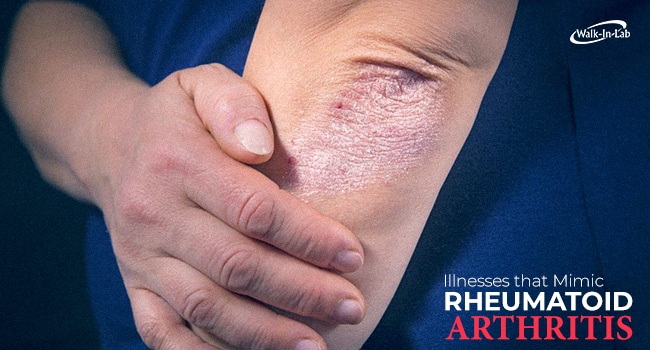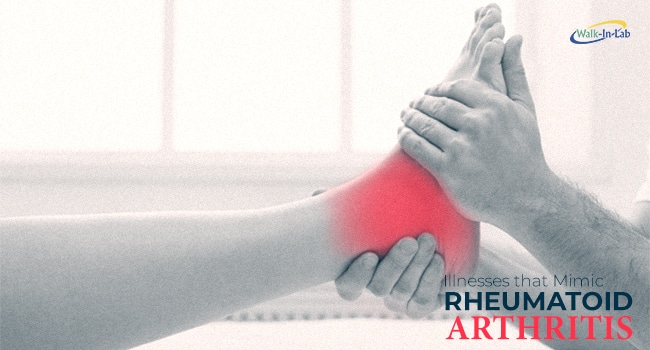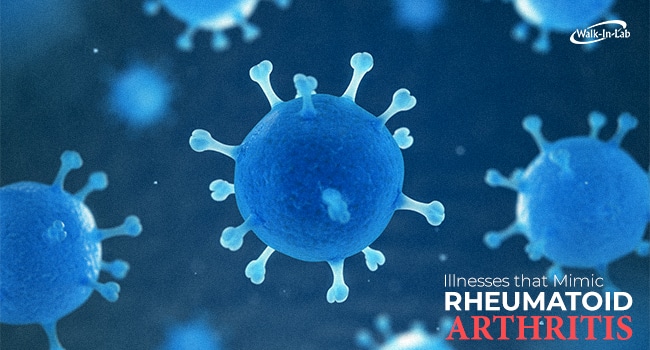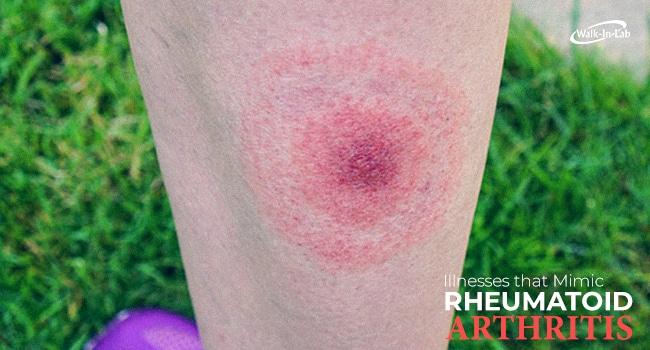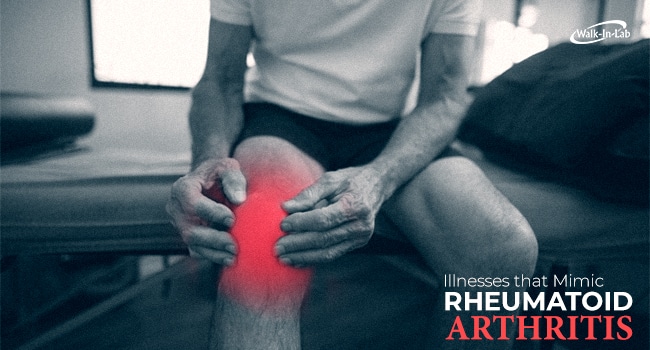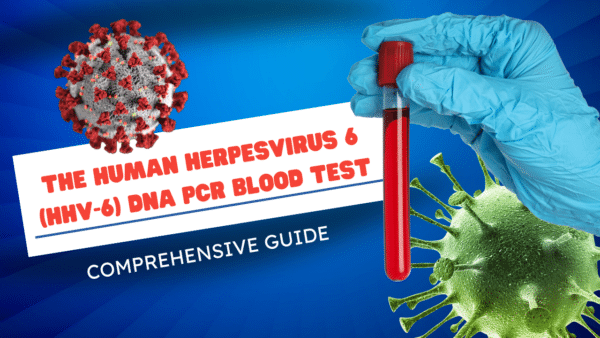Joint pain is the hallmark of Rheumatoid Arthritis (RA), but it is also common in several other illnesses. Rheumatoid Arthritis is a chronic autoimmune disease that causes the immune system to attack its own tissues – which include the delicate tissues that encapsulate most joints, hence, the joint pains.
Nonetheless, RA is not the only condition which includes joint inflammation, fever, and fatigue as its symptoms. In fact, these are also common in several other conditions like Fibromyalgia, Osteoarthritis, Ankylosing Spondylitis, Psoriatic Arthritis, Gout, Lupus, and infectious arthritis.
Doctors believe early diagnosis and treatment is crucial to limiting potential tissue damage and preserving joint function, but the diagnostic process can be challenging. Diagnosis includes looking for clues that help distinguish the patient’s condition from other conditions, ruling out each possible diagnosis until only one is left. The process of distinguishing one disease from others is called the “differential diagnosis.” Now, let’s read through the article to find out if your joint pain is caused by RA or something else.
Fibromyalgia
This happens when the brain overreacts to pain signals, intensifying feelings of pain in different parts of the body. Fibromyalgia and RA are separate diseases, but some people have both.
Like RA, fibromyalgia is more common in women and runs in families, but the exact cause is unknown. Both are chronic in nature and can have periods of exacerbation and remission. However, Fibromyalgia typically does not cause swelling (except in children). It often causes tenderness in specific areas of the body. Fibromyalgia is not a degenerative condition and does not cause joint erosion and deformity.
Osteoarthritis
This occurs when the cartilage that acts as padding between the joints degenerates. The cartilage can wear down gradually over the year. It is characterized by joint pain that is worse after periods of inactivity. Joints may feel stiff and lose range of motion. Sometimes an affected joint is swollen and/or tender to the touch.
Although some people with osteoarthritis experience joint swelling, the swelling is usually mild and less notable than the moderate to severe joint swelling that is a hallmark of RA. But since Osteoarthritis is not a systemic (body-wide) autoimmune disease like RA, it is not accompanied by fatigue, fever, or flu-like symptoms.
Ankylosing Spondylitis
This is a form of inflammatory arthritis that primarily affects the spine, but it can affect other joints too.
People with this condition often experience morning pain, stiffness, and fatigue. Affected joints can also feel swollen and tender. Some also experience redness of the eye, light sensitivity, and blurred vision.
Unlike RA that commonly affects smaller joints first, Ankylosing spondylitis usually produces symptoms in the low back, hips, and/or shoulders. Both diseases can affect anyone; but RA is most frequently diagnosed in women ages 30 to 60 and ankylosing spondylitis is more frequently diagnosed in males under the age of 40.
Psoriatic Arthritis
As per the National Psoriasis Foundation, 85% of people with this condition also have psoriasis – a condition that can cause red, patchy areas of skin and pitted fingernails. However, a person does not need to have psoriasis to have psoriatic arthritis, which makes it relatively difficult to diagnose.
In contrast with RA that commonly affects the first and/or second knuckles of the hands, Psoriatic arthritis usually affects the distal joints of the fingers and toes. To provide more context, distal joints are the joints furthest away from the body, such as the third knuckle of a finger.
In addition, psoriatic arthritis usually causes fingers and toes to swell along their entire lengths, making them look like sausages, and RA causes swelling just at the affected knuckles.
Polyarticular Gout
Gout is a metabolic disorder that causes microscopic crystals to build up in a joint. Only one joint is affected in about 90% of gout cases. As for the other 10%, if the disorder affects two or more joints it is called polyarticular gout.
Gout causes joint pain, swelling, redness, and warmth, so when it shows up in two or more joints it may be initially mistaken for RA. Both RA and gout can cause fever, fatigue, and/or a general feeling of being sick. However, gout symptoms usually appear suddenly and without warning, but RA pain usually appears more gradually and is most notable in the first hour after waking.
Gout can be diagnosed or ruled out by drawing fluid from the affected joints and examining it under a microscope. People with rheumatoid arthritis rarely get gout.
Viral Arthritis
Experts estimate about 1% of arthritis cases to be viral arthritis wherein the viral infection leads to joint pain and swelling. Examples of these viruses are parvovirus B19, known for causing fifth disease (erythema infectiosum), painful joints and anemia. Other examples of viruses that can cause viral arthritis include enterovirus, rubella, HIV, and hepatitis B and C.
Viral arthritis results in inflamed joints that are swollen, tender, red, and warm to the touch.
There is no specific blood test for RA, but a blood test can usually show whether or not a person has or had a particular virus. The joint symptoms will typically go away once the viral infection is either treated or resolves on its own, though in some cases arthritis symptoms become chronic.
Lyme Disease
Lyme disease is a bacterial infection spread to humans by infected deer ticks and western black-legged ticks. Some people do not know they have been bitten, making the diagnosis challenging. A doctor may consider a Lyme disease diagnosis if the patient experienced a bullseye-shaped rash or has been in an area where deer ticks and Lyme disease thrive.
Like RA, Lyme disease can cause joint pain and fatigue. People with Lyme disease often report headaches and/or stiff necks. Lymph nodes may become swollen and muscles may ache, and fever may be accompanied by chills.
A blood test can show the presence of Lyme disease, but it cannot be done until 2 or 3 weeks after the tick bite, and the results are not always accurate. Experts recommend treating suspected Lyme disease with antibiotics as soon as possible, often before lab tests can confirm a diagnosis.
Septic Arthritis
Sometimes an infection in a joint can cause severe inflammation, pain, and swelling. Most septic arthritis is caused by a bacterium called Staphylococcus aureus. This occurs when a bacteria, virus, or fungus elsewhere in the body travels through the bloodstream and invades the joint. It can also occur when an infectious organism reaches the joint through a break in the skin though less common.
In most cases, just one joint is affected. But it may still result to an inflamed joint that is swollen, tender, red, and warm to the touch. People with infectious arthritis may also have a fever and/or feel unwell. Joint symptoms usually appear suddenly and are often severe, making the person affected unable to move or use the affected joint.
People who have weakened immune systems, including people who take RA medications, are at an increased risk for septic arthritis.
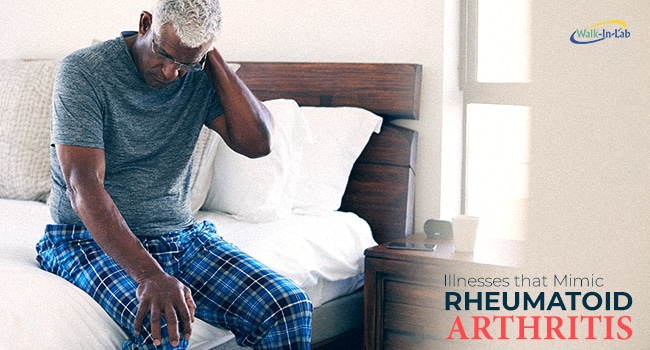
Lupus
A complex autoimmune disease, lupus can cause a wide range of symptoms that vary in severity, making it challenging to diagnose. Many people refer to lupus by its full medical name, systemic lupus erythematosus (SLE).
One of the most common symptoms of lupus is pain and swelling in the hands, knees, and other joints. People often report fatigue, fever, and a general feeling of being unwell.
A person with lupus may find it difficult to breathe and may experience light sensitivity, hair loss, mouth sores, and/or a skin rash, particularly over the face. Digestive difficulties and neurological problems, such as headaches and tingling, are also possible.
There are a lot of illnesses that mimic RA. There is no single lab test that definitively diagnoses RA, but there are tests you can take to make sure if your joint pain is caused by something else. We urge you to have yourselves checked. Luckily, we have a walk-in laboratory that can take your tests to put your mind at ease. Shop tests for Lupus to find out more. After all, laboratory tests play a vital role in making sure that physicians make the correct diagnosis and determine the appropriate course of treatment.
Sources:
(https://www.arthritis-health.com/types/rheumatoid/what-rheumatoid-arthritis-ra)



